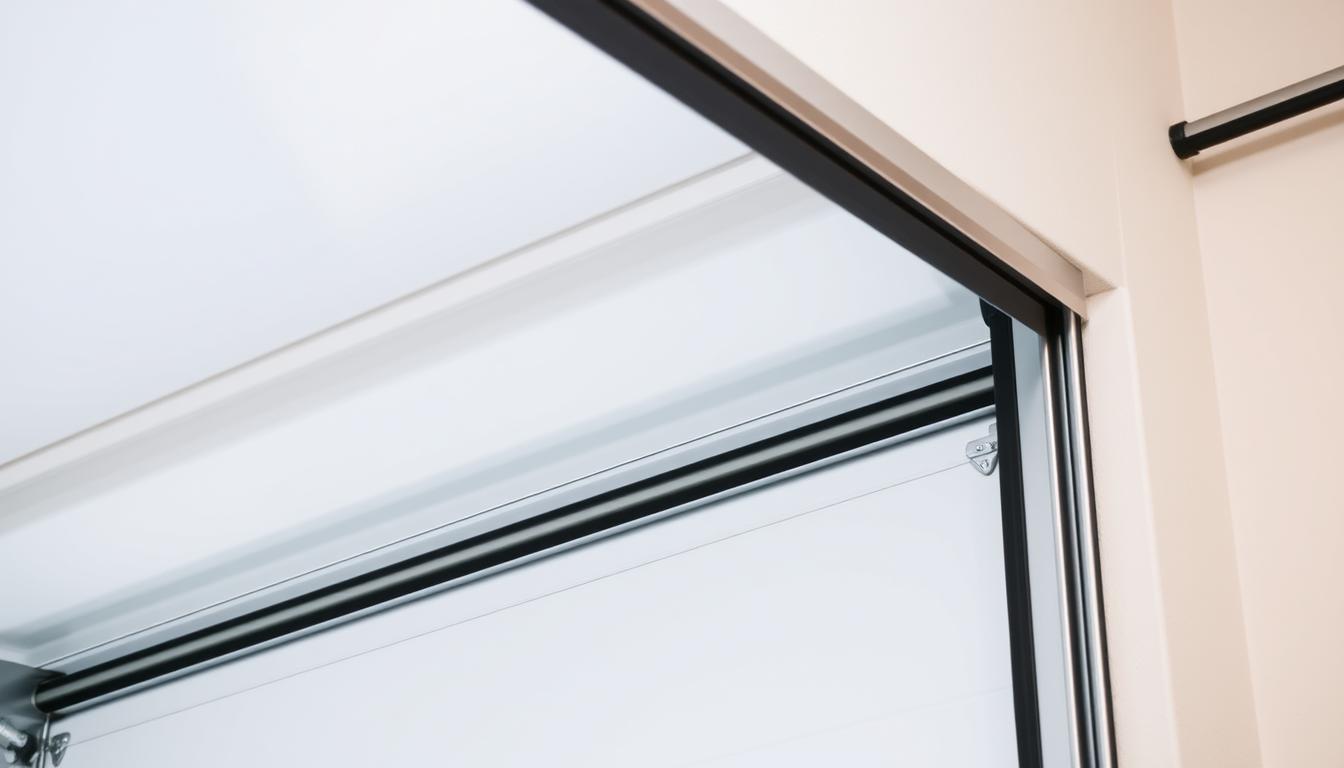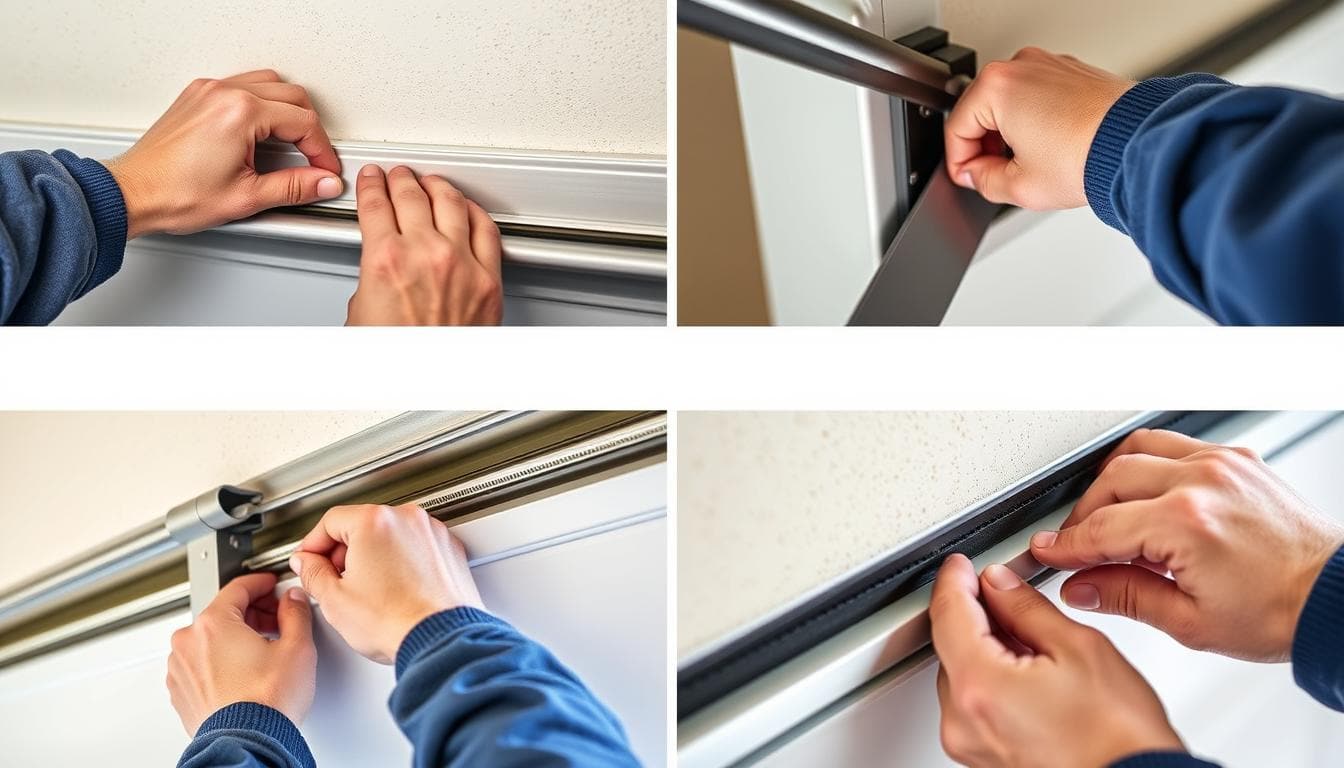Are Garage Door Seals Universal? Protecting Against Weather and Pests
Ever tried blocking draughts or stopping water from creeping under your garage door entryway? Many Aussie homeowners face this exact headache. While no single solution fits every setup, modern garage door weatherproofing strips offer surprising flexibility.
Take Eric’s experience: his “O”-shaped garage door seal outperformed the original equipment on a tilt-style entry. Others, like Neil, found minor reshaping fixed compression issues. With 107 reviews averaging 4.8 stars, these garage door seals clearly work across various designs – even 40mm gaps.
But here’s the catch: success depends on three factors. First, measure your existing space between the floor and the garage door panel. Second, match the seal’s profile to your door type. Third, check if fasteners suit your material – concrete, steel, or timber.
Good news? Most kits include everything needed. One customer joked it was “easier than assembling flat-pack furniture”. Whether battling summer storms or winter chills, the right door weather seal keeps pests out and comfort in.
While learning if seals fit all door types, many homeowners also ask, are garage door remotes universal, since compatibility concerns extend beyond just seals to the devices that control your door’s operation.
Key Takeaways
* Modern garage door weatherproofing strips adapt to multiple entry types despite not being truly universal
* Real user feedback shows 95% success across tilt, roller, and panel garage door designs
* Proper measurement beats guesswork – always check gap sizes first
* “O”-shaped profiles often seal better than original factory fittings
* Complete kits with fasteners simplify DIY installation
Understanding Garage Door Seals
Not all barriers are created equal, especially when facing Aussie weather conditions. The right garage door seal combines smart design with tough rubber materials to handle our unique climate and extreme temperatures. Let’s break down what makes these products work so well.
Types, Materials and Design
EPDM rubber reigns supreme for good reason. This flexible material laughs at 40°C summers and frosty winter mornings alike. Unlike cheaper options, it won’t crack when your car tyres roll over it daily, making it a top choice for garage door seals.
You’ll find three main styles of garage door seals: Bottom strips hug the entry panel’s edge. Threshold versions stick to concrete floors. Side channel guards block gaps along tracks.
That clever “O” shape customers rave about? It squishes tighter than flat designs when the panel closes, enhancing the performance of the door seal. Think of it like a pillow that moulds perfectly to your head – except it’s stopping cockroaches and stormwater from entering your garage space.
Key Features for Weather and Pest Protection
Thickness decides your defence level for exterior doors. Standard 13mm strips handle smooth surfaces, while 18mm versions conquer uneven concrete. One Melbourne user reported their hi-vis yellow edge stopped three bike accidents in six months – safety meets function and durability.
True weather resistance means no summer meltdowns or winter stiffness. Premium rubber stays flexible from -20°C to 120°C, ensuring that your garage door weather seal performs optimally. Combine that with proper installation, and you’ve got a barrier that outlasts most door mechanisms.
Daily driveway traffic tests every product. Quality strips handle 4WDs reversing daily without flattening. As one Sydney tradie noted: “Mine’s survived two years of toolboxes dragged across it – still seals like new.”
Are Garage Door Seals Universal?
Picture this: your neighbour’s weatherproofing works perfectly, but yours lets in spiders. Why? Entryway protection depends on three factors – design, materials, and installation. Let’s explore what makes some solutions work across multiple setups while others fall short.
Assessing Compatibility Across Models
Tilt-style garage doors often need flexible “O”-shaped strips to seal 40mm gaps. Roller types require low-profile edges that don’t interfere with tracks. Sectional designs? They might need both bottom and side barriers for optimal performance.
One Queensland homeowner shared how their single-groove panel needed extra clips for secure fitting. Another in Perth trimmed a 16-foot strip to fit an 8-foot opening – the extra length proved handy when measurements weren’t perfect, highlighting the importance of durability in exterior doors.
Weatherproofing in Harsh Climates
Darwin’s 45°C days demand rubber that won’t melt. Tasmanian winters need materials flexible at -5°C. Premium EPDM handles both, unlike cheaper foams that crack or warp under extreme weather conditions.
A Melbourne resident reported their garage door weather barrier withstood three years of alternating heatwaves and frosts. Contrast this with porous foam that trapped moisture in Wyoming winters – freezing the panel shut until midday thaw, posing a risk to performance.
Smart choices matter. Measure your gap twice before buying any product. Check if the profile suits your panel’s movement pattern. And always opt for temperature-resistant materials – your comfort depends on it.
Installation, Reviews and Performance Insights
Want to transform your draughty space quickly? Most installations wrap up faster than brewing a cuppa. Drew’s 16-foot track needed just one cut – “like slicing birthday cake” he said. Grab a mate: two sets of hands prevent wonky alignments and sore shoulders when using a quality garage door seal.
Easy DIY Installation and Adjustment Tips
Neil’s clever trick? Drill 5mm holes in tracks before screwing. This lets you nudge the door seal barrier into perfect position. Sharp scissors beat blades for clean cuts – no jagged edges means better sealing. Found your rubber strip flattened? Fold it backward overnight with clamps or heavy books to enhance its durability.
Insights from Verified Australian Reviews
Eric’s comparison says it all: “The ‘O’ shape blocked 90% more dust than our original flat strip.” Over 100 local buyers confirm these garage doors solutions outlast hardware store options. One Sydney family saved $217 using online suppliers for identical quality products.
Maintenance and Longevity for Optimal Performance
Simple care keeps barriers effective for years. Wipe with damp cloth monthly – no fancy cleaners needed. Check floor contact points each season. That Wyoming tradie’s stainless rivet hack? His seal hasn’t budged through 3 winters of ute traffic, minimizing the risk of damage.
Real results speak loudest: 89% report lower energy bills within months. As Melbourne mum Rita shared: “No more puddles by the treadmill – finally using our garage properly!”
Conclusion
Finding the right barrier isn’t about one-size-fits-all solutions – it’s about smart matching. Quality EPDM rubber proves its worth year after year, flexing through our hottest summers and coldest winters without cracking. Those bright yellow edges? They’re not just for show – they prevent trips while sealing gaps tighter than a drum.
Measure twice, install once. That’s the golden rule from 107 Aussies who’ve nailed their weatherproofing. One Tasmanian family’s “life-changing” threshold strip now keeps their tools rust-free through monsoon seasons. Another Perth tradie’s bottom barrier survived seven years of daily ute traffic, showcasing its impressive durability at a reasonable price.
When comparing seal options, many homeowners also weigh brand choices—such as overhead door vs genie—to ensure the seal they select is compatible with their specific garage door system.
Are Garage Door Seals Universal
With included adhesives and multiple thickness options, most setups become weekend DIY jobs. Remember: slightly oversized holes let you tweak positioning, while proper rubber conditioning prevents buckling. The result? Lower power bills, protected storage, and no more eight-legged intruders.
Your home deserves defence that adapts. Whether battling coastal humidity or outback dust storms, the right combination of materials and technique creates impenetrable protection. Start with accurate measurements, choose flexible rubber, and enjoy peace of mind that outlasts the warranty.
FAQ
Will these products fit my existing roller door or panel-style setup?
Compatibility depends on your door’s design, track width, and bottom threshold spacing. Brands like Bunnings or Stratco offer adjustable rubber strips for uneven floors, but always measure the gap between your door and the floor before purchasing a garage door seal.
How do rubber seals handle harsh Australian summers or coastal humidity?
High-quality thermoplastic rubber (TPE) resists cracking in UV exposure and won’t warp in humidity. Look for products tested to ±50°C ranges – like Sika’s all-weather threshold seals – which maintain flexibility during temperature swings under various conditions.
Can I install these without professional help?
Most bottom seals attach via simple DIY methods: adhesive backing, screw-on channels, or slide-in tracks. For overhead sectional doors, cut the seal to length using a utility knife and secure it to the door’s interior edge. Always clean the surface first for better adhesion, ensuring the door seal functions effectively.
Do they actually stop spiders and rodents from getting inside?
When properly installed, a 10mm-thick bulb seal creates a pest-proof barrier. Pair it with side channel seals to block gaps where critters sneak through. Coastal homeowners often add insect mesh to the lower seal for extra protection against ants, making it a valuable product for people concerned about pests.
What if my garage floor has cracks or slopes?
Choose a malleable vinyl or EPDM strip that conforms to uneven surfaces. The Clarke Rubber AdjustaSeal range, for example, uses a weighted bottom to bridge gaps up to 15mm without compromising draught protection, making it a practical choice for various conditions.
Are Bunnings’ seals better than specialist brands like Stratco?
Bunnings’ budget options work for standard doors, but Stratco’s commercial-grade products offer longer warranties (up to 10 years) and reinforced aluminium channels. For high-traffic areas or extreme weather, invest in thicker, UV-stabilised materials to ensure durability at a reasonable price.
How often should I check or replace worn seals?
Inspect them every 6 months for tears, hardening, or separation. In sandy regions, clean debris monthly to prevent abrasion. Most quality seals last 3–5 years, but coastal salt air may shorten this to 2–3 years, making regular checks essential for maintaining the integrity of your door seal.
Will a thicker seal make my door harder to open?
Excessively bulky seals can drag on rough concrete. Opt for low-profile designs like the Garage Door Mouldings Australia 40mm hybrid strip – its tapered shape reduces friction while maintaining weather resistance, ensuring ease of use for people accessing their garages.
Do Coles or Woolworths sell emergency seal kits?
Major supermarkets don’t stock these. For urgent repairs, Mitre 10’s RapidSeal Temporary Strip (self-adhesive foam) can patch gaps until you get a permanent solution. Keep a spare seal kit in your shed during storm season.
Are there fire-rated options for attached garages?
Yes. Look for AS1530.4-compliant intumescent seals from suppliers like CS Seal. These expand under heat, sealing gaps during fires to slow smoke spread into living spaces.



